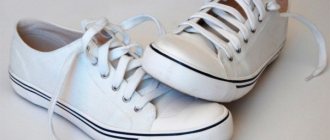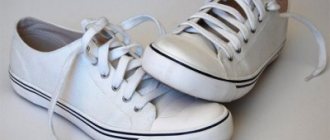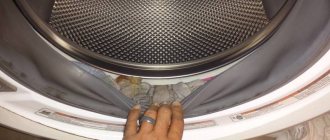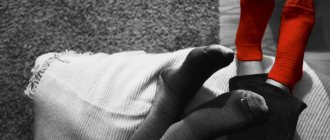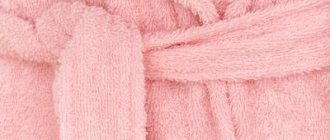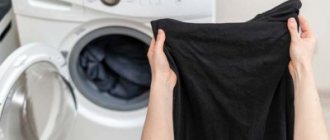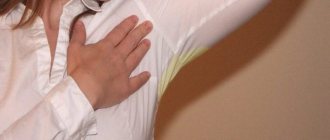Fresh dirt
How can you wash fresh dirt from white socks at home using available products? Use inexpensive recipes from the arsenal of experienced housewives.
- Laundry, alkaline soap . Lather your socks and leave them to soak for an hour. Then wash it.
- Lemon juice . Squeeze the juice from half a citrus. Add washing powder in a ratio of 2 parts juice + 1 part powder. Wet your socks, wring them out and rub them with this mixture. Leave for 2-3 hours.
- Lemon acid . You will need 5 liters of water at a temperature of 70-80℃. Add here 5-6 tablespoons of bleaching washing powder and 2 tablespoons of lemon juice. Soak your socks for a couple of hours. Wash and rinse by hand.
- Baking soda . Sprinkle soda thickly on wet socks after washing and rub gently with your hands so that the soda penetrates the fibers. Leave for an hour and rinse.
Here's how to clean white soles on any shoe made of any material. Read!
How to wash knitted, woolen and membrane items
Some types of fabric require a special approach. These include waterproof, wool and membrane.
How to wash children's clothes
Children's socks are made of knitwear, so they are washed by hand using baby or laundry soap, and also washed in a machine, choosing the “delicate” mode, since under normal conditions things can shrink.
Children's socks should not be washed with adult clothes.
How to wash something made from waterproof material
These socks can be washed by hand or in a washing machine; the water temperature should not exceed 40 degrees. Conventional products are not suitable for membrane fabric. Powders will clog pores, which can damage the item. The same effect can occur when washing with bleach and conditioners, and chlorine-containing products will lead to a loss of water-repellent properties of the product. In this regard, you should use special delicate products, as well as baby or laundry soap.
At the end of washing, the socks are turned inside out, wrung out, then turned inside out again and dried naturally. Waterproof items are not wrung out, so as not to damage the membrane responsible for the water-repellent effect.
Soaking socks before washing
Here's how to effectively wash white socks from dirt: choose a working solution and soak your socks in it for 1-2 hours. After soaking, the socks will wash much easier and cleaner.
Luckily, with white things there is room to turn around! There is no need to think whether the stain remover will bleach the fabric or not. These folk recipes have excellent reviews. If desired, after soaking the socks can be washed by hand rather than in a machine.
- Vinegar water : 0.5 liters of warm water + 1 tablespoon of table vinegar 9%.
- Boric acid : 1 tablespoon of acid per 1 liter of water.
- Lemon juice : juice of one citrus for 5 liters of water. Individual spots are treated with undiluted juice. The recipe is quite expensive. It is used for sports socks purchased for performances.
- Ammonia 10% : 2 teaspoons of ammonia per 1 liter of water.
- Baking soda : 4 tablespoons per 2 liters of water.
- Antipyatin soap . Legends tell about its capabilities. Antipyatin saves clothes from a variety of stains. Lather the socks, taking special care with the black soles. Leave for 2-3 hours. Wash by hand or machine.
- Homemade stain remover : will whiten socks that have turned gray from frequent washing. Prepare a solution: 5 liters of water, 1.5 tablespoons of turpentine and 1.5 tablespoons of washing powder (preferably oxygen). Stir well and soak the socks overnight or even for a day. Wash as usual. Please note: turpentine has a strong, unpleasant odor, so place the wash basin on the balcony.
Radical means
If the socks have completely lost their appearance and cannot be washed, you can resort to very strong substances and methods. These include boiling, bleach and turpentine. It is better to use such products in extreme cases, as with regular use they will damage the fabric.
Digestion
Peculiarities. This method of processing things has been known for a very long time. But not everyone uses it, since many modern whitening products are now available. This procedure is very effective, but before boiling white socks, it is important to make sure that they are not made of wool or synthetics. If you need to quickly bleach white children's socks, then the method will be one of the best, but use baby powder.
Procedure
- Pour water into the pan.
- Add a quarter of a lemon, shavings from half a bar of soap and washing powder.
- When the solution boils, place the socks there and boil for 20-30 minutes.
- After cooling, wash the product by hand or put it in an automatic washing machine.
White
Peculiarities. When using chlorine, it is important that the socks are made of cotton; the method is not suitable for other fabrics.
Procedure
- You need to add two tablespoons of chlorine and 100 g of washing powder to two liters of water.
- Place socks in the solution until the morning.
- Rinse things well and dry them in a place where there is no sun. Direct exposure to sunlight causes yellow stains that are difficult to remove.
Turpentine
Peculiarities. Turpentine will also help return your socks to their snow-white color. But you need to use it carefully, and you need to soak the products in the solution for at least a day.
Procedure
- Take a 10 liter bucket and add three tablespoons of the product to it.
- Add three tablespoons of washing powder.
- Leave for long-term soaking.
- Wash and dry.
Black pellets may appear on the surface of the socks. They cannot be washed and you need to resort to mechanical action. A special device (shaver), which you can buy at a hardware store, or a regular (slightly dull) razor, which you need to carefully remove the defect, will help you get rid of black pellets.
After washing: what if THEY are still dirty?
How to wash white socks from black ingrained dirt that even washing in a washing machine did not remove? The last hope of the diligent Clean is bleaching in special solutions. You can, of course, use “Whiteness,” but it quickly destroys textile fibers and gives the fabric a yellowish tint.
Choose the appropriate recipe. Dip the socks completely into the liquid and straighten them with your hands. All bleaches contain caustic substances, first put on rubber gloves and keep children and pets away from the basin.
Bleaching agents for cotton
- Boric alcohol (or powdered acid). For 3 liters 2 tablespoons of acid. Soak the dirty sock for 2-5 hours. Boric acid easily removes black stains even on a trampled baby sock.
- Ammonia 10% . Recipe: 2 teaspoons of ammonia for 2 liters of water. Bleaching dirt for 2-3 hours.
- Table vinegar 9% . It will quickly return your socks to their snow-white color and get rid of unpleasant odors. Recipe: 1.5 liters of water, 200 ml of vinegar. Heat the water to 70-80℃ (this is the temperature of the water from which steam comes, or 5 minutes after boiling). Put your socks down. Leave it overnight. Wash with bleaching soap or powder. To make the fabric soft, rinse in water with 1-2 teaspoons of soda. Don't forget the gloves!
- Mustard powder . How to wash very dirty white socks? Take advantage of the whitening properties of hot mustard. Soap your socks with laundry soap and let them sit for 2-3 hours. Do the laundry. Heat the water to a temperature of 40℃ (your hand can tolerate it), add a few tablespoons of mustard (2 tablespoons per liter of water). Soak your socks for a couple of hours. After this you can machine wash it again. To avoid contaminating the drum, first rinse your socks to remove mustard powder.
- Hydrogen peroxide 3% + ammonia 10% . For 3 liters of hot water, add 3 tablespoons of peroxide and 1 tablespoon of ammonia. Dip the socks into the mixture, leave to soak for a day, after which all that remains is to wash. Be careful: ammonia is very caustic and causes burns to the respiratory tract, so do not snort the bottle. Peroxide also removes white laces.
Advice from "Chistyuli" . When preparing this article, I found advice online about soaking socks in a solution of potassium permanganate or boiling them. Since potassium permanganate gives things a brownish tint, I do not recommend using this recipe. As for boiling... I still remember my lost children's socks, which my mother, then not yet a very experienced housewife, boiled. The elastic bands stretched irrevocably and darkened.
Baking soda or soda ash gives amazing results
Bleaching agents for synthetics
Since pure cotton in socks is now as rare as snow in Africa, Cleaners have to think about how not to damage the delicate fiber, but at the same time wash effectively. Here's how to remove dirt from white socks made of synthetic fabrics: do not boil them, wring them out, or use products with chlorine.
Only such means are suitable.
It is allowed to use lemon juice and acid, laundry soap, hydrogen peroxide, and soda. All these recipes are above. Dishwashing gel also works well. Dilute the product with water and washing powder 1:1:1. Shake the mixture until foam appears. Rub the places that have to be washed off from dirt. After 2-3 hours, rub with your hands and wash in a machine.
Advice from "Chistyuli" . Socks made of synthetic fabrics quickly lose strength when washed in hot water (temperatures up to 70℃). Wash sports socks at 30-35℃. Never dry them on a radiator.
Wool bleaching
A sad story happened to my husband’s warmest down socks. I put one sock in the washing machine, not noticing that the second one was left in the laundry basket. Moreover, in a hurry, I set the wrong mode - I washed it at a temperature of 40℃, on the “synthetic” mode, with a spin speed of 400 rpm.
Boiling
Once upon a time, boiling was almost the only way for housewives to clean light-colored clothes from stubborn dirt.
Currently, it is one of the methods that is resorted to in the most extreme cases. In order for boiling to give the desired result, you need to follow simple rules:
- Only cotton clothing items are allowed to be boiled.
- It is recommended to boil in enamel containers or stainless steel vessels.
- For every kilogram of things you will need about 10 liters of liquid.
- The detergent component must be thoroughly dissolved.
- The container should only be heated after loading laundry.
- Before boiling, it is advisable to soak in a similar solution to enhance the effect.
Table. How to determine the material of socks
| Cotton, linen |
|
| Wool |
|
| Synthetics |
|
| Polyester |
|
What you need to know
Whatever washing method you choose, be sure to follow these rules.
- Wash as often as possible . As soon as you take off your socks for the first time, put them in the dirty laundry basket. Then the dirt will not have time to eat into the fabric and it will be easier to wash it off.
- Don't put off washing . The longer the socks wait for the “bath procedures”, the more difficult it will be to wash them.
- Avoid bleach . It can thin out the fabric and cause your socks to deteriorate quickly. You need to be especially careful with bleach if there is appliqué, lace or other decor on your socks.
- Use laundry bags . If you are going to machine wash and are afraid that your socks will get damaged due to friction in the drum, put them in special bags - they will protect the fabric, but will not affect the quality of the process.
- Do not wash in hot water . This will only make sweat stains more noticeable. They will also be absorbed into the fabric so much that it will be very difficult to wash them off.
- Pay attention to the fabric . If the composition contains wool, socks should be washed at a temperature of no more than 35 degrees and they should not be rubbed too vigorously. But cotton socks can be washed even at 60 degrees (if they are not too dirty).
- Do not dry in bright sun . This may cause yellow streaks to appear on the fabric.
- Try not to wear white socks with black shoes . It may stain the fabric.
Ready-made stain removers
The stain remover is added to the washing machine or the product is soaked in it for an hour, preparing the solution according to the instructions.
- Domestos (Domestos) . Not exactly a target product, so I’ll immediately give you the recipe for the solution. Dilute the product with warm water 1:1. Soak the socks for 5 minutes and wash. Domestos contains chlorine and can leave white stains on colored clothes.
- Aquarius (Aquarius) . Italian oxygen stain remover. Confidently and effectively removes stains from white or colored items. Not suitable for wool, silk, delicate fabrics.
- Vanish Oxi Action (Vanish) . Removes fresh stains and disinfects clothes. Add to the powder when washing in a basin or machine, as well as when soaking things. Doesn't remove old stains well, but is very effective at removing fresh dirt.
- "Bos" . Oxygen bleach, in the product line for white and colored laundry. Gently removes stains during soaking and during the main wash. Disinfects textiles. A good budget product.
- "Myth" . Washing powder for white and colored clothes. Acts as a washing powder activator and as a stain remover. Removes dirt quite well. Easily rinsed out of fibers.
- "Sarma" . Bleach works even in cool water and is used for both hand and machine washing. Safe for all types of fabrics.
- Dosia (Dosya) . Effective at temperatures 30-60℃. It also easily removes stubborn stains.
- "Eared Nanny" . The product contains only non-aggressive components, so the product is suitable for any fabric. Effective against stains and stubborn odors.
- Ase (Ace) . Also suitable for hand and machine wash. It not only whitens stains, but also refreshes the entire item. Removes gray plaque that has appeared over time.
- Synergetic (Synergetic) . Suitable for wool, silk or cotton. Removes dirt stains and traces of faded paint. A line of safe, environmentally friendly products.
Tricks for automatic washing
Some life hacks will help you solve the problem of washing white socks more efficiently. These are “lazy” washing methods.
- For washing in an automatic machine, you can put several tennis balls in the drum cavity. They will increase friction, which will not harm the thing. Wash on daily wash cycle. You can add any of the above bleaching solutions to the compartment and then the result will be guaranteed.
- Another very interesting life hack that will be simply irreplaceable if you are on the road. To do this you will need a plastic bottle with a wide neck. You can take a five-liter container of drinking water. Pour warm water into the container, add detergent or washing powder, place the item in it and screw the lid tightly. Place the bottle in the trunk and continue on your way. Due to the shaking in the car, the effect of an automatic machine will be created and by the end of the trip the socks will be washed. True, you will have to wring out and dry it yourself.
These methods will help extend the life of white socks. It’s better if you treat such a delicate item with more care from the first days, and if you can’t save them, then buy new ones and take care of them using our advice.
How to get rid of black soles
The soles of socks get dirty faster and more heavily, and white textiles seem to attract dust and dirt. Here's how to remove white socks from black soles with minimal effort.
- Remove any stuck debris from the surface of your socks: threads, hair, etc. When washed in hot water, colored threads may fade and leave noticeable marks on the socks.
- Properly soap your soles with laundry soap. After this, it will be much easier to wash off the dirt.
- Now soak the socks in a solution of boric acid (1 teaspoon of the substance per 1 liter of water). Leave for 2-3 hours. Rinse and wash thoroughly to remove any remaining boric acid.
- Or instead of boric acid, use hydrogen peroxide 3%. The recipe is the same.
Advice from "Chistyuli" . For socks whose soles have turned black, wash them thickly with any soap and put them in the washing machine. I use this method all the time, and on socks of any color. The recipe is very effective!
Preparing for washing
Simple preparation before washing will restore the whiteness of the products and protect them from possible troubles. Here's what to do:
- Separate from colored laundry so that it does not fade during washing and does not stain white socks.
- Clean the socks from any debris, turn them inside out and shake out.
- Prepare detergents.
- You can pre-soak it, which will make it easier to remove dirt.
The water for soaking should be no higher than 30°C so that the dirt does not stick to the fabric more strongly.
Tips from the forums
For light-colored socks, the sole wears out first.
Many Cleanies generously share their experience on how to wash dirt off white socks. Here are some simple recipes. They are all workers.
- Soap (laundry soap, Ushastiy Nyan, Duru, Sarma) + Udalix stain remover. Lather your soles thoroughly and leave for 2-3 hours. Then soak overnight with Udalix powder. Wash by hand or machine.
- "Domestos" . Soak your socks in water with Domestos added. Wash it in an hour.
- Baking soda + washing powder . Add ingredients to water and stir. Soak your socks overnight.
- Gel SA8 . Add the gel directly to the machine, strengthening the washing powder. If necessary, you can strengthen the gel with Vanish stain remover.
- Dishwasher tablets . Place one tablet in a basin, add 5 liters of water. Stir until the tablet dissolves. Soak your socks for several hours. Spin it in the washing machine.
- Ammonia 10% . Add 2-3 teaspoons of ammonia to the same bowl of water. Get your socks wet.
Unexpected ways
Here are 4 more original ways to wash your socks white. A little unusual, but effective.
In the microwave
This express method will be appreciated by men and even ladies when there is no reason to run the washing machine just for one pair of items. Requires a bowl, warm water, detergent and a microwave.
Add dishwashing detergent or liquid soap to a bowl of warm water. Place the socks and put them in the microwave. Wash for 10 minutes at high power and then rinse in a basin.
Aspirin
Soak socks in 3 liters of water with 2 aspirin tablets. You can add a little washing powder. Leave for several hours or overnight and then wash.
When washing in a machine, add 3-4 aspirin tablets to the laundry drum to help whiten socks better. However, this method cannot be practiced often: it is considered harmful to the machine.
Dishwashing liquid
Perfectly dissolves grease and removes dirt. That's why it works with socks too. The product is applied to problem areas, left for 10-30 minutes and washed.
White toothpaste
Apply directly to dirt. To enhance the effect, you can mix it with hydrogen peroxide. After a few minutes, rinse and wash.
How to dry socks quickly
Sometimes you need to dry your socks at home quickly. I usually do this if the house is cool and my socks need to be dry in the morning. For example, you often forget that today the child put on his last clean pair of socks, and in the morning he needs a clean pair.
- Wrap your socks in a towel and twist them out. Hang in a draft to dry.
- Gently dry your socks with an iron. Set the mode to minimum and do not keep it in one place for a long time, so as not to “fry” your socks.
- Open each sock and hang them so that a stream of air blows right through the fabric. Dry with a hairdryer.
I spotted an interesting method in the village. To dry thick woolen socks overnight, they are stuffed with straw and placed over the stove. In the morning, put on clean, warm woolen socks.
Useful tips and tricks
You won't need to bleach your socks often if you follow a few simple guidelines:
- Minimize wearing white ankle boots with dark shoes.
- Keep your feet clean; there is less chance of contamination if your feet are always clean.
- It is better to wash your socks immediately after taking them off, do not wait too long.
- Pay attention to temperature conditions and always wash white items separately.
- If you have tried the acid method, dry the washed item in a dark place away from sunlight, otherwise the fabric will appear yellow.
So…
Relax while washing and achieve excellent results?
With “Clean” it’s not difficult! How to wash white socks from dirt at home? Choose a recipe that suits your fabric. Choose a homemade or ready-made stain remover. If necessary, soak your socks. Keep them in the solution for the required time. Rinse and evaluate the result. Repeat the procedure if necessary. Good luck!
Share useful information with your friends:
"Lazy" solutions
In addition to the standard methods of “reanimating” light-colored hosiery, there are also unusual solutions. They are usually practiced by avid bachelors themselves and recommended to others.
Tennis balls
Peculiarities. It is enough to add a few balls to the drum of the washing machine along with the clothes, which will make it possible to create a good mechanical effect and quickly “beat” dirt from the fibers. However, first make sure that the balls themselves do not shed by keeping them in warm water.
Procedure
- Place socks in the washing machine drum.
- Place two or three tennis balls there.
- Turn on normal wash cycle.
How to maintain whiteness
To keep your stockings light-colored longer, you should follow these basic rules:
- hygiene is regularly monitored, underwear is worn only on clean feet;
- You should not wear the same pair for more than one day;
- in the evening, the removed items are soaked and then washed (sometimes pre-treatment with soda or soap foam eliminates the need to search for bleaching recipes);
- clean the inner lining of the shoes, check the cleanliness of the insoles;
- white socks are washed separately from other clothes;
- carefully read the label, which indicates how to care for the item: the choice of detergents depends on the composition of the fibers;
- observe the washing temperature regime, do not heat the water above +35℃.
Dry bleached socks away from the sun
Additional Information! If you regularly wash or soak tights with table salt (2 liters - 3 tablespoons), the fibers will soften and be freed from dust particles. The smell of sweat will disappear. Things will still be bright white.
Which method to choose: manual or machine
Methods that allow you to wash white socks from dirt are divided into two main categories.
- The first category includes white items for which an automatic washing machine is suitable. The socks are placed in the machine and the program is adjusted to suit the type of fabric. A certain temperature and time are set.
- The second category includes things that include such small items of clothing as socks, which are best washed by hand to control the process yourself.
An additional category involves returning socks to whiteness by boiling. Classic washing is not carried out in this case. The essence of this method is that the fabric is exposed to extremely hot water.
An additional category involves returning socks to whiteness by boiling.
Removing yellowness and gray spots
The following remedies help remove gray plaque and yellow marks and return things to their former whiteness:
- Soda. Water is added to the powder to form a paste. Apply the mixture evenly to dirty areas. After 10 minutes, things are rinsed. Sometimes acetic acid or hydrogen peroxide is added to the composition (the volume of water is reduced). This recipe is suitable for removing stains and bleaching cotton.
- Hydrogen perhydrate: take 3 tablespoons per 3 liters of water. l. peroxide. To enhance the effect, add 1.5 table to this composition. l. ammonia. After soaking for half an hour, washing and thoroughly rinsing, the socks are dried on the balcony to remove the smell.
- Potassium permanganate. Make a warm pale pink solution, into which the stockings are immersed for 3 to 5 hours. To enhance the effect, cover the basin with a plastic bag or lid. After treatment, the pairs of socks are washed in the standard way.
- A mixture of dishwashing concentrate and washing powder: 5 drops of gel are combined with 1 spoon of powder, mixed and diluted with water. Hand wash and rinse thoroughly.
- Ammonia. Table 4 is dissolved in two liters of cool water. l. ammonia. The laundry is soaked and washed after 2 hours.
- Turpentine: 2.5 tablespoons are dissolved in 10 liters of water, add 3 tablespoons. l. powder. Things are left in the basin overnight, scrubbed in the morning and thoroughly washed with clean water. To remove persistent odor, dry with the window open.
Hydrogen peroxide will refresh snow-white socks.
Woolen or synthetic items are treated with oxygen compounds. Cotton linen can be soaked with a chlorine-containing preparation (reduces the time the substance is exposed to the material).
Tips on how to remove pellets
During active wear and frequent washing, pills may appear on the socks, which significantly spoil the appearance of the product.
There are several ways to get rid of the problem at home:
- If there are few pellets, they are cut off with nail scissors.
- If there are a large number of them, it is worth using a comb with fine teeth. Use a comb to comb out defects.
- A stiff brush helps, but it can ruin the texture of the fabric.
- Sometimes tape can remove small pellets.
You can purchase a miniature pellet removal machine that is easy to use and can be used at home. There is no point in removing defects on woolen products.
It is better to periodically clean cotton and synthetic socks to remove pellets.
Causes of dirty white socks
Often the whiteness disappears and dark marks appear on the material due to the following reasons:
- hyperhidrosis of the feet - if the feet sweat a lot, the underwear quickly becomes moisturized;
- mechanical types of pollution - accidentally spilled coffee, splashes of dirt from under car wheels, drops of paint;
- faded insoles and inner lining of boots;
- walking on a dirty floor without shoes.
Finding out the cause helps to avoid re-contamination and choose the right cleaning method and means.
